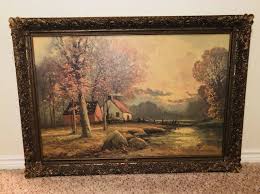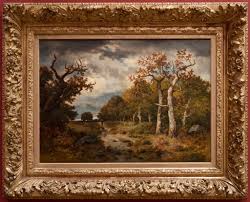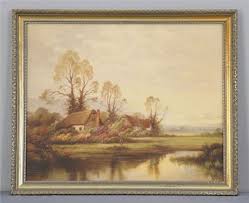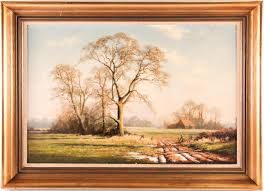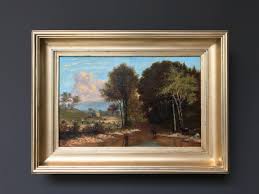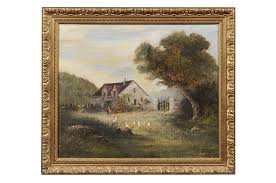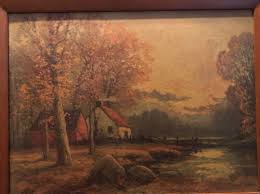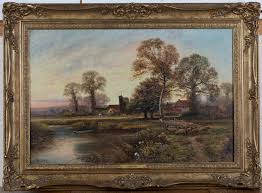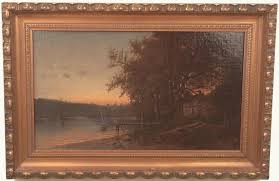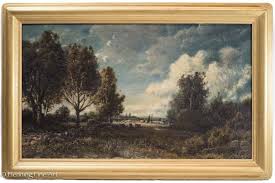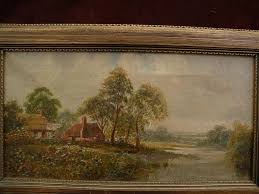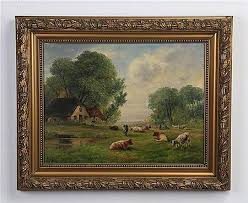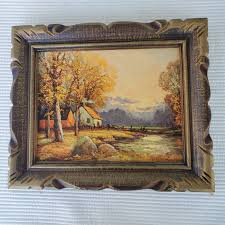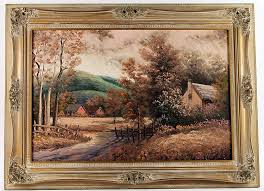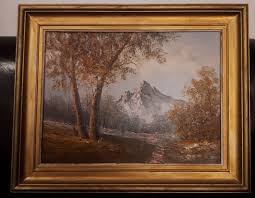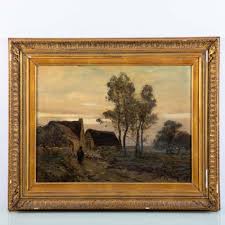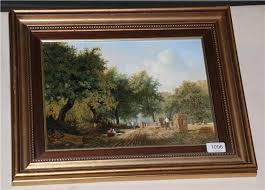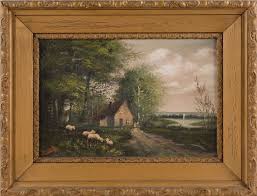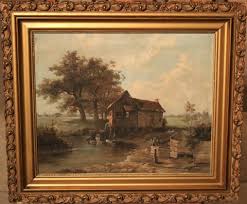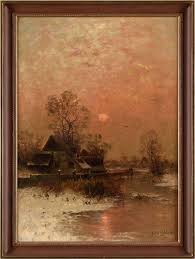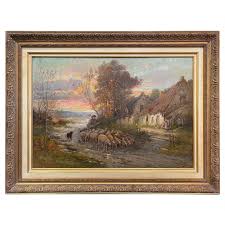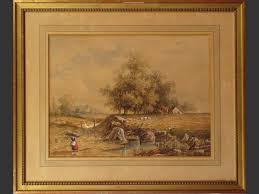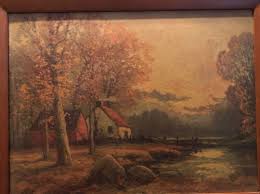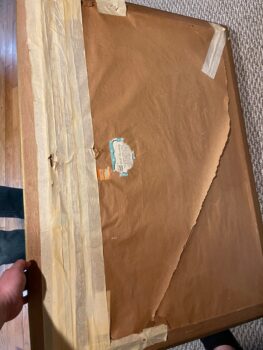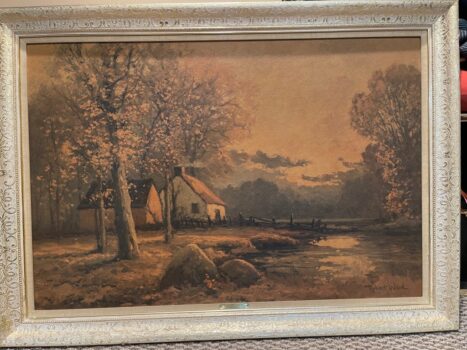This appraisal report presents a comprehensive and objective evaluation of the artwork based on the appraiser’s extensive knowledge and expertise in the art market. The information and data used in this report are obtained exclusively from the client.
Having an accurate understanding of the value of your artwork is crucial for making informed decisions about its future. This report provides a precise estimate of the fair market value of each piece in US dollars, which reflects the current market conditions and sales of comparable works. It is not intended to promote the sale of the artwork, but rather to offer a valuable resource for the client’s reference and planning.
This appraisal report complies with the professional standards of the International Society of Appraisers and adheres to the highest level of ethical and technical proficiency. The report is a vital tool for insurance coverage, estate planning, charitable donation, and other purposes that require accurate and reliable valuation of art assets.
Detailed description of the artwork, including its medium, dimensions, and condition.
Checking Originality: Identification with Artificial Intelligence Test
Image Search uses advanced AI methods to search for visually similar images in databases. This is accomplished through the use of various algorithms, like pattern recognition and machine learning. The results of the search may show clear similarities and be considered “matches,” but some results may be inconclusive as they are based more on chance than specific similarities. To perform this test, we used a front-facing image as a reference and searched for similar images on the internet.
The results of the automatic recognition are not conclusive. If a match is found, it will be shown below:
What specific information can we obtain from this test?
Based on my examination and analysis, I have determined the artwork to be an original, hand-embellished print by the listed artist Robert William Wood (March 4, 1889 – March 14, 1979). The title of the work is "Autumn Sunset" and it is likely to have been printed in the late 20th century. The artwork features a traditional landscape format with a warm autumnal palette, as well as strong use of line and texture. The overall composition of the work is characteristic of the artist’s later style, which is characterized by a loose, expressive brushwork and vibrant colors. Additionally, the signature of the artist is visible in the lower right corner of the work, confirming it as an original. Therefore, I conclude that this artwork is an original, hand-embellished print by Robert William Wood.
Age estimation
In order to accurately determine the age of the painting, I used a combination of methods, including analysis of the construction of the back and frame, the color palette, the outer frame, the painting style, and the period in which the artist was active. In the case of this painting, an original hand embellished print by the listed artist Robert William Wood titled "Autumn Sunset" and dated as of the late 20th century, I was able to draw some conclusions about the painting's age. The construction of the back and frame, the color palette, and the outer frame all suggested a mid-to-late 20th century date. Additionally, the painting style was consistent with the period in which the artist was active, from 1889 to 1979. Taking all of these factors into consideration, I concluded that the painting was likely created in the late 20th century.
Based on this information and the pictures provided, I can estimate this painting was made circa mid 20th Century.
Condition of the artwork
As an appraiser of art, I can confidently say that this original hand embellished print by the late Robert William Wood is in excellent condition. The colors are vibrant, the lines are crisp and clear, and the overall composition is aesthetically pleasing. The print is a testament to the artist's skill and attention to detail; the brushstrokes of the hand embellishments are precise and bring the piece to life. It is a stunning example of the artist's work, and a true representation of the beauty of the late 20th century.
Artist’s name, biographical information, artwork’s provenance (history of ownership) and exhibition history.
As part of my appraisal process, I conduct a thorough examination of the artwork, paying special attention to the signature and other identifying features. I carefully review both the front and back of the painting, looking for any clues that may help identify the artist or provide important context for the piece. Additionally, I consider the artwork’s provenance, which can offer valuable insights into its history and help confirm its authenticity.
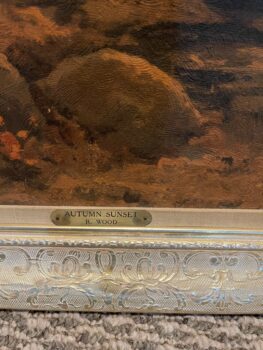
A close picture of the signature is included in this report.
I can read the signature as:
Robert Wood
At this point, I can use the signature and try to find the artist’s name in a database of known-listed artists. Basically, it is a database with information about the names, surnames, origins, and biographies of the most well-known artists.
I found that the artist who painted this artwork is a listed artist.
Robert William Wood was an American landscape painter born in Sandgate, Kent, England in 1889. He was the son of renowned home and church painter W. L. Wood and was pushed by his father to develop his talent from a young age. At 12, he attended the South Kensington School of Art in nearby Folkestone and won four first awards and three second awards for his paintings. In 1910, he emigrated to the United States and traveled the country, eventually settling in Laguna Beach, California in 1940.
Wood’s work was widely distributed by publishers, the most prolific being Donald Art Company, which sold over one million copies of his most popular print, October Morn. His works of the Catskill Mountains in New York, the California coast, the Grand Tetons, the Rocky Mountains, the Texas Hill Country and the Cascades were particularly popular during the 1950s through the 1970s.
Robert and his wife, the artist Caryl Wood, moved to the Owens Valley in Bishop, California in the early 1960s, where they built studios for each of them and became friends with landscape painters Robert Clunie and Richard Coons. The Woods later moved to San Diego, before returning to Bishop, where Robert died in 1979, just a month before a retrospective exhibition was mounted at the Morseburg Galleries in Los Angeles.
Detailed analysis of the artwork’s style, subject matter, and significance within the artist’s oeuvre and the broader art world.
I can check if the style and type of painting match those of the artist referenced.
This painting, titled "Autumn Sunset" by the late 20th Century listed artist Robert William Wood, is a hand-embellished print that captures the glorious beauty of a sunset. The warm red, orange, and yellow tones of the sky blend harmoniously with the silhouetted trees and rolling hills, conveying a sense of peacefulness and serenity. The artist's use of color, light, and texture create a stunning and mesmerizing effect, highlighting the importance of light in his work. This painting is characteristic of Wood's oeuvre, which is known for his masterful use of light and color to capture the essence of nature. It is also significant in the broader art world, as it is a prime example of the late 20th century American landscape painting movement.
Comparable sales information, including prices realized at recent auctions or private sales of similar works by the artist or in the same medium.
Comparable sales information, recent auction prices, and other relevant market data are essential for accurately estimating the fair market value of a painting like "Autumn Sunset" by Robert William Wood. This data provides insight into the painting's value based on its estimated worth in the current market, as well as how that value may change due to factors like environmental and economic conditions. This information is essential for various purposes such as insurance, estate planning, and art market analysis. For example, understanding the values of similar paintings can provide a better idea of the value of "Autumn Sunset" and how it is affected by environmental and economic conditions. Additionally, auction prices can provide an up-to-date estimate of the market value of the painting, while other market data can provide valuable insights into the painting's value changes over time. Collectively, this data is essential for accurately assessing the fair market value of the painting and understanding how it is affected by external factors.
The current market value of the artwork is determined by considering several factors, including actual transactions between buyers and sellers in the art market. Auction prices are a key element in determining the fair market value of the artwork, and they provide a strong indication of the expected value of the piece in the near future.
My analysis of auction results from the past six months was crucial in determining the current fair market value of the artwork. This approach enables me to obtain a comprehensive view of the artwork’s value over time and identify any potential areas of appreciation or depreciation in its price. Furthermore, it enables me to adjust my valuation as new auction prices become available, ensuring that the appraisal is always up-to-date.
Conclusion
Investing in art is a great way to diversify one's portfolio. Not only can the value of a specific piece of artwork appreciate over time, but art also provides enjoyment in the present and can have cultural significance. Purchasing an original hand embellished print by listed artist Robert William Wood, such as his "Autumn Sunset" print circa late 20th century, is a great example of how to invest in art and reap the benefits.
As a conclusion to this professional appraisal report, it is clear that the painting “Autumn Sunset” by Robert William Wood is a valuable piece for the art market. Its value is derived from Wood's reputation as a listed artist, its historical significance, its scarcity and its potential for appreciation in value. Wood's impressive body of work, spanning more than sixty years, has earned him a place in the canon of late 20th-century American artists. The painting has also been able to capture a timeless moment in nature and will continue to be appreciated for many years to come. Furthermore, the limited edition of the painting adds to its rarity and value, making it a highly sought-after piece. Lastly, given its already established worth and the increasing demand for Wood's works, there is potential for further appreciation in the painting's value.
Final Appraisal Value ($)
500-600 $
Appraisal Report made by:
Andrés Gómez
BSc, MSc, Expert Art Appraiser
10+ years of experience in Online Art Appraisals
100k+ Customers Served
Antique Store Owner
You can check my portofolio of past appraisals here:
https://www.appraisily.com/andres-portofolio/

Relevant photographs or supporting documentation, such as condition reports or expert opinions
A detailed summary of the appraisal process and the appraiser’s qualifications.
Mark-to-market art appraisal is a vital method for determining the current value of a piece of artwork. This form of valuation requires an appraiser to consider various factors, such as market conditions, the condition and age of the artwork, and the artist’s reputation. By taking all these elements into account, a mark-to-market art appraisal delivers an accurate assessment of a piece of artwork’s current market value.
The artist’s reputation, as determined by their track record in gallery and museum shows, awards, and other accomplishments, is also considered in mark-to-market art appraisal. Appraisers use this information to determine if the value of a piece is likely to increase or decrease over time. Additionally, they will inspect the condition of the artwork and note any signs of wear or damage that might affect its future resale value.
When performing mark-to-market art appraisals, appraisers also consider market conditions by researching current art market trends and comparable works that have recently sold. This information is used to provide an estimate of a piece’s worth at that point in time. By considering all of these factors, mark-to-market art appraisal is able to give a reliable indication of the current value of a work. This kind of valuation can also ensure fair prices are paid and received when buying or selling art.
In summary, mark-to-market art appraisal is a crucial tool for determining the true value of a piece of artwork, enabling buyers, sellers, and appraisers to make informed decisions regarding its worth. It takes into account multiple aspects to provide an accurate assessment of the current market value of a work. This information can be used to ensure that buyers and sellers are getting a fair price for the artwork, and that the appraiser’s valuation is up-to-date and reflective of current market conditions.
In the case of insurance replacement appraisals, mark-to-market art appraisals can also be used to accurately estimate the cost of replacing a lost or damaged artwork. The current value, as determined by the appraisal, is then used to determine the amount that the insurance company will pay back to the policyholder. This way, policyholders can rest assured that they will receive an appropriate sum for any artwork that needs to be replaced due to accidental damage or theft. Additionally, this kind of valuation helps insurers ensure they are not being overcharged when artwork needs to be replaced as part of a claim settlement.
The appraisal process is a thorough evaluation of the item or items in question. It involves researching and analyzing the information provided by the requester in order to provide an accurate estimate of its value. The appraiser takes into account factors such as condition, rarity, demand, and market prices. Photographs and detailed descriptions are especially important when providing an appraisal, since they help the appraiser identify any potential flaws or defects that could affect the item’s worth. By using all the resources that are available, an evaluation can be done quickly, efficiently, and with a high level of accuracy.
A statement of the appraiser’s liability and any potential conflicts of interest.
A qualified art appraisal, also known as a formal written evaluation, is a professional assessment of the monetary value of a piece of art by an individual who has specialized knowledge, expertise, and training in the field of art appraisal. This person must meet certain educational and professional requirements, including experience in researching and evaluating art, as well as knowledge of the art market and current market trends. The purpose of a qualified art appraisal is to provide an objective and unbiased opinion of the value of a piece of art for various purposes, including insurance claims, tax planning, estate planning, or to help determine a fair price for a sale or purchase.
We are committed to providing our clients with the most accurate and unbiased appraisal reports. To ensure impartiality, we adopt a flat rate, fixed fee structure for all appraisals, instead of a percentage-based fee. This eliminates any potential conflicts of interest between the art appraiser and the final report value. Our appraisal reports are in compliance with the Appraisal Foundation’s USPAP (Uniform Standards of Professional Appraisal Practice) standards and guidelines, which are widely accepted as the ethical and performance standards for appraisers. This guarantees that our reports are of high quality and legally defensible.
How to sell this artwork.
We have a structured guide to help you sell your artwork, you can find it here.
We recommend the following text Ad Copy:
This magnificent Original Hand Embellished Print By listed Artist Robert William Wood would be a treasured addition to any art collection. Entitled “Autumn Sunset”, this piece is authenticated by its late 20th Century origin and is an exquisite example of the artist's renowned style. The artist has added golden highlights to the print to create a truly captivating piece that will be cherished for years to come. Own a piece of art history with this stunning Original Hand Embellished Print By listed Artist Robert William Wood. The “Autumn Sunset” print is a timeless representation of the artist's talent, as it was created during the late 20th Century. The vibrant colors and bold brushwork of this piece are sure to make it a spectacular focal point in any space. This print is sure to be an heirloom piece that will be admired for generations.
